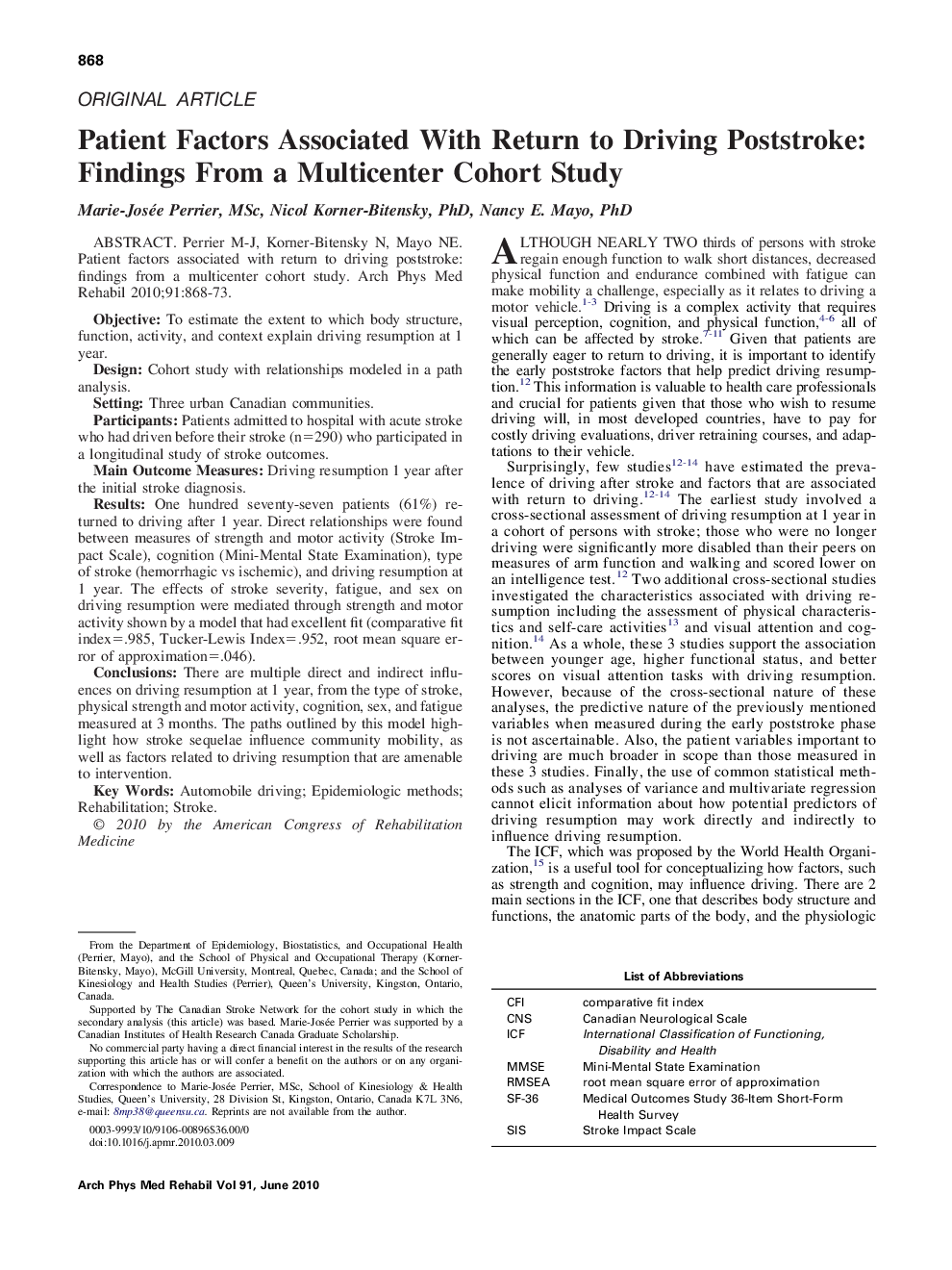| Article ID | Journal | Published Year | Pages | File Type |
|---|---|---|---|---|
| 3451146 | Archives of Physical Medicine and Rehabilitation | 2010 | 6 Pages |
Perrier M-J, Korner-Bitensky N, Mayo NE. Patient factors associated with return to driving poststroke: findings from a multicenter cohort study.ObjectiveTo estimate the extent to which body structure, function, activity, and context explain driving resumption at 1 year.DesignCohort study with relationships modeled in a path analysis.SettingThree urban Canadian communities.ParticipantsPatients admitted to hospital with acute stroke who had driven before their stroke (n=290) who participated in a longitudinal study of stroke outcomes.Main Outcome MeasuresDriving resumption 1 year after the initial stroke diagnosis.ResultsOne hundred seventy-seven patients (61%) returned to driving after 1 year. Direct relationships were found between measures of strength and motor activity (Stroke Impact Scale), cognition (Mini-Mental State Examination), type of stroke (hemorrhagic vs ischemic), and driving resumption at 1 year. The effects of stroke severity, fatigue, and sex on driving resumption were mediated through strength and motor activity shown by a model that had excellent fit (comparative fit index=.985, Tucker-Lewis Index=.952, root mean square error of approximation=.046).ConclusionsThere are multiple direct and indirect influences on driving resumption at 1 year, from the type of stroke, physical strength and motor activity, cognition, sex, and fatigue measured at 3 months. The paths outlined by this model highlight how stroke sequelae influence community mobility, as well as factors related to driving resumption that are amenable to intervention.
